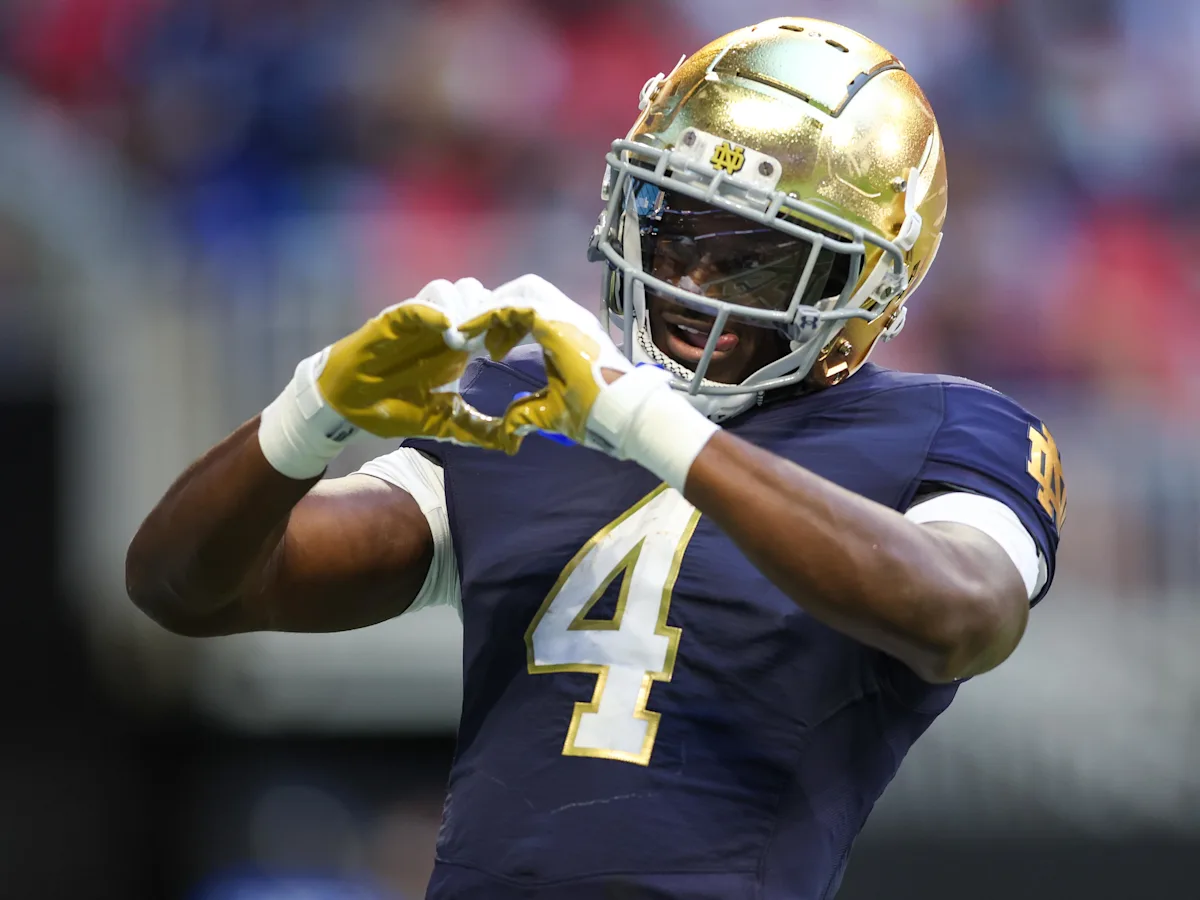The 2002 Notre Dame Football Season: A Polarizing Journey of Triumph, Heartbreak, and Enduring Debate
The 2002 Notre Dame football season remains one of the most fiercely debated campaigns in the program’s storied history. It was a year that began with cautious optimism, surged with unexpected promise, and ultimately ended in crushing disappointment—leaving fans and analysts divided over its true legacy. For some, it was a valiant resurgence under first-year head coach Tyrone Willingham, a sign that the Fighting Irish were reclaiming their place among college football’s elite. For others, it was a mirage, a season built on shaky foundations that collapsed when tested against the nation’s best. Two decades later, the debate still lingers: Was 2002 a stepping stone toward relevance or merely another false dawn in Notre Dame’s quest to return to glory?
Notre Dame entered the 2002 season at a crossroads. The program had endured three disappointing years under Bob Davie, culminating in a 5-6 record in 2001 that sealed his fate. The hiring of Tyrone Willingham, the first Black head coach in school history, brought a wave of renewed energy. Willingham, who had enjoyed success at Stanford, was seen as a disciplinarian with a sharp offensive mind—a stark contrast to Davie’s conservative approach.
The Irish opened the season unranked, with modest expectations from the national media. But Willingham’s impact was immediate. Notre Dame stunned No. 21 Maryland in the Kickoff Classic, 22-0, showcasing a suffocating defense and an efficient, if unspectacular, offense. The win set the tone for an electrifying start. Victories over Purdue, Michigan, and Michigan State—all ranked opponents—propelled the Irish into the top 10, and suddenly, Notre Dame was the talk of college football.
By mid-October, Notre Dame sat at 8-0, its best start since 1993. The defense, led by linebacker Courtney Watson and safety Gerome Sapp, was dominant, allowing just 12.6 points per game. Quarterback Carlyle Holiday, while not a prolific passer, managed the game effectively, and running back Ryan Grant provided balance. The Irish were winning with grit, discipline, and timely plays—hallmarks of Willingham’s early tenure.
The national spotlight intensified. ESPN’s College GameDay descended on South Bend for Notre Dame’s showdown with No. 11 Florida State. The atmosphere was electric, and for three quarters, the Irish held their own. But in the fourth, the Seminoles exposed Notre Dame’s offensive limitations, pulling away for a 34-24 victory. The loss stung, but at 8-1, the Irish remained in the BCS conversation.
Then came the collapse.
What followed was one of the most brutal stretches in recent Notre Dame history. A lifeless 14-7 loss to unranked Boston College extinguished BCS hopes. A 44-13 humiliation at USC—a game in which the Irish were outclassed in every phase—left fans questioning the team’s toughness. The season ended with a 28-6 Gator Bowl loss to NC State, a game that underscored Notre Dame’s offensive ineptitude (they managed just 65 passing yards).
The 10-3 final record looked respectable on paper, but the manner of the defeats was alarming. The Irish had been outscored 106-23 in their final three games, exposing fatal flaws. The offense, which had relied heavily on field position and defense, lacked explosiveness. Willingham’s rigid system, once praised for its efficiency, now seemed predictable. The late-season meltdown cast a shadow over the early success.
Two decades later, the 2002 season remains a Rorschach test for Notre Dame fans.For supporters, 2002 was a necessary step forward. After years of mediocrity, Willingham restored accountability and competitiveness. The 8-0 start proved Notre Dame could still contend, and the defense was among the nation’s best. The losses, while ugly, came against talented teams. With better recruiting, the foundation was there.
Detractors argue the season was fool’s gold. The early wins were against overrated opponents (Michigan and Florida State both finished unranked), and the offense was unsustainable. Willingham’s inability to adjust doomed the team when opponents figured them out. The collapse wasn’t a blip—it was a preview of his eventual downfall.
Willingham’s tenure never recovered. After a 5-7 debacle in 2003 and a 6-5 campaign in 2004, he was fired, leaving behind a fractured program. The 2002 season, once a beacon of hope, became a cautionary tale about the perils of early success masking deeper issues.
Yet, for all its flaws, 2002 remains unforgettable. It was a season of fleeting brilliance and harsh reality, a microcosm of Notre Dame’s modern struggles. For some, it was proof the Irish could still compete. For others, it was a reminder of how far they had fallen. Either way, it’s a year that still sparks debate—and in South Bend, that’s the sign of a season that truly mattered.



